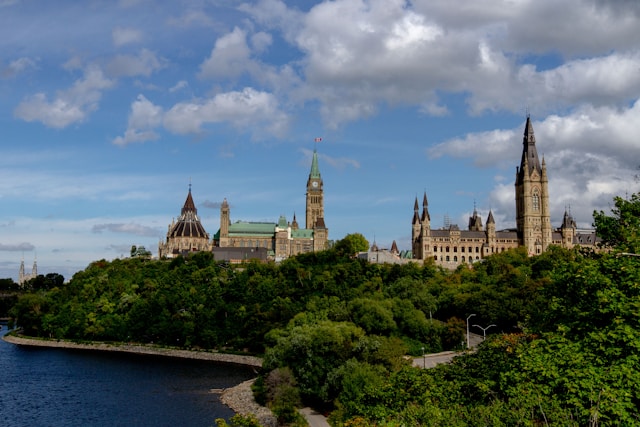The air crackles with political tension across Canada as a snap election, once seemingly predictable, now hangs precariously in the balance. What looked like a clear path to victory for Pierre Poilievre and the Conservatives just months ago dissolved dramatically, leaving rookie Prime Minister Mark Carney and the Liberals unexpectedly favoured as voters head towards the polls this coming Monday. The swift reversal underscores a volatile electorate grappling with complex pressures, both domestic and foreign.
The key players are clear: Mark Carney, the former central banker who stepped in after Justin Trudeau’s exit, leads the Liberal party, seeking an improbable fourth consecutive mandate for the party in power since 2015. His main challenger is Pierre Poilievre, the leader of the Conservative party, who rode a wave of populist sentiment and focus on cost-of-living issues to a commanding lead earlier in the cycle. The campaign narrative shifted profoundly, influenced heavily by external factors, primarily the unpredictable actions and rhetoric emanating from the United States under President Donald Trump.
Analysts point to several factors explaining the Liberals’ resurgence. Many Canadians, while potentially weary of the Trudeau era, sought a centrist alternative to Poilievre’s more aggressive, attack-focused style. Carney, with his background heading the Bank of Canada and Bank of England, projected an image of stability that resonated with swing voters anxious about Trump’s potential impact on trade and national unity. The Conservative messaging, heavily focused on domestic affordability, struggled to adapt quickly enough to the sudden dominance of the Trump factor in the national conversation.
The leadership styles present a stark contrast. Carney positions himself as both a change agent – jettisoning controversial Trudeau-era policies like the carbon tax – and a steady hand capable of navigating international uncertainty. He aims to appeal to tired Liberals and moderate Conservatives by offering stability without being Trudeau. Conversely, Poilievre maintains a disciplined focus on affordability and housing, issues deeply concerning younger Canadians. His campaign relies on mobilizing his base and highlighting perceived Liberal failures over the past nine years, often framing issues through a populist, anti-establishment lens.
Regionally, the battlegrounds are diverse. Quebec, with its 78 seats, has shown surprising strength for Carney and the federal Liberals, potentially challenging the Bloc Québécois’ traditional hold. Carney’s personal popularity there is notable. The Greater Toronto Area remains a crucial, seat-rich region the Conservatives must penetrate to forge a path to victory. While Conservatives dominate the mid-west, those seats alone aren’t enough. They need gains in Ontario, Quebec, and Atlantic Canada, a difficult task given the collapse in support for minor parties like the NDP, which often split the centre-left vote.
Ultimately, Canadians face distinct election choices. Do they opt for the perceived stability and international experience offered by Mark Carney Liberals, even if it means extending nearly a decade of Liberal rule? Or do they embrace the change promised by Pierre Poilievre Conservatives, prioritizing domestic economic concerns like the cost of living despite anxieties about populist trends and international relations? With advance polls already seeing significant turnout, many have made up their minds. For the rest, it’s getting down to decision time! The outcome remains uncertain, hinging on which ballot question – Trump or affordability – ultimately motivates voters and which generation turns out in greater numbers.
The final days may hold surprises, but the polling consensus points towards a Liberal advantage, though a majority government isn’t guaranteed. A Conservative victory would signify a major polling failure and potentially reshape the Canadian political landscape significantly. Regardless of the result, the election reveals deep anxieties and shifting priorities within the Canadian electorate, setting the stage for the country’s direction in challenging times.
References:
‘Strange Data in the Polls’: Election Day Nears in Canada

